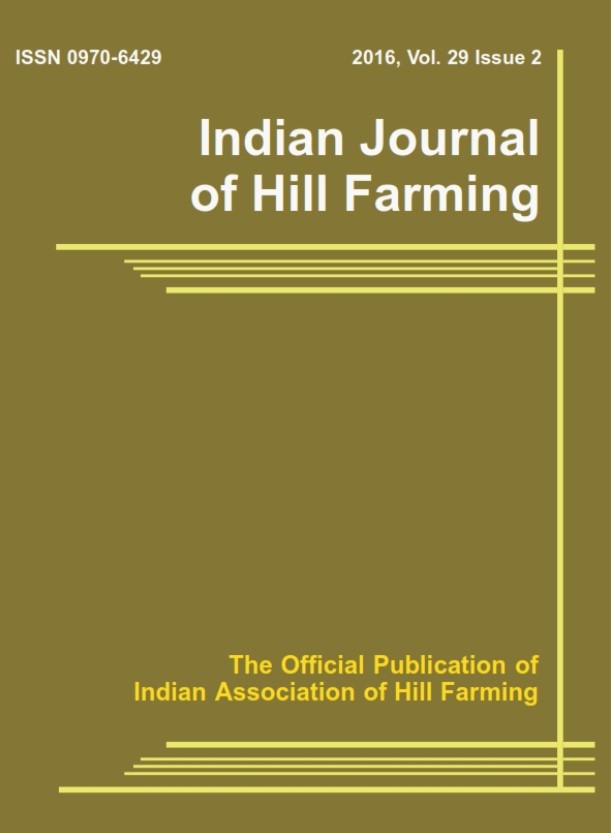Alternate land use systems for newly developed mango orchard in improving farm productivity and profitability under hilly upland of Odisha
DOI:
https://doi.org/10.56678/Keywords:
Alternate land use system, land intensification, nutrient balance, intercropping, soil fertility, system productivity, farm profitabilityAbstract
The alternate land use (ALU) system within the fruit orchard in hilly undulating land area is a suitable rainfed technology to minimize risk of crop failure, achieve stability in farm production and suitably meet the challenges and the vagaries of weather under dryland condition. An experiment was undertaken in the research farm of All India Coordinated Research Project for Dryland Agriculture (AICRPDA), Odisha University of Agriculture and Technology (OUAT), Phulbani during 2016-17 to 2017-18 to study the impact of different intercrops vegetables (cowpea, radish) and intra-crop papaya accommodated in intra-row spacing of mango (4 m x 4 m) due to lower row-spacing (2mx 2m) within newly developed mango orchard under different nutrient management practices on the system productivity, farm profitability and soil fertility. Three nutrient management practices such as (i) organic management, (ii) integrated nutrient management (INM) and (iii) conventional method were taken as main plot treatments whereas three horticultural crops such as cowpea, radish and papaya were taken as subplot treatments. The investigation revealed that the integration of fruit and vegetables within mango orchard under INM practice registered higher productivity and improved soil moisture than other nutrient management practices. The radish and cowpea as intercrop with fruit trees recorded higher net income ( 73, 450 ha-1 , 86,700 ha-1 ),B:C ratio (3.41, 3.16), RWUE (rainwater use efficiency 9.45, 8.27 kg ha -1mm -1 ) and positive nutrient balance than intra-cropped fruit trees. All horticultural crops under INM, resulted higher value in terms of yield, crop economics and soil nutrient status. Hence, cowpea, radish as inter row crops and papaya as intra row crop can profitably and sustainably be grown in rainfed uplands of Odisha because of their ability to improve soil fertility, productivity and fulfill the monetary requirement of the farmers providing resilience to the rainfed farming.Downloads
Published
2023-03-31
Issue
Section
Articles
License
Copyright (c) 2023 S.K. Behera, M.R. Panda, D.K. Bastia, Diksha Loona (Author)

This work is licensed under a Creative Commons Attribution-NonCommercial-NoDerivatives 4.0 International License.
How to Cite
Alternate land use systems for newly developed mango orchard in improving farm productivity and
profitability under hilly upland of Odisha . (2023). Indian Journal of Hill Farming, 36(01), 144-152. https://doi.org/10.56678/




